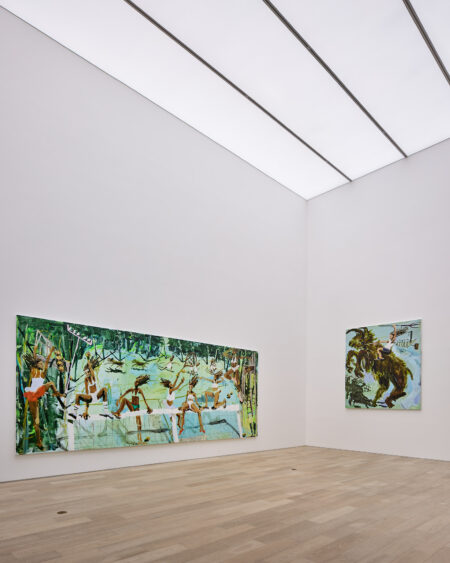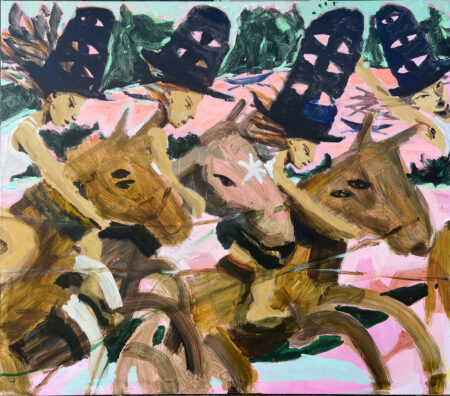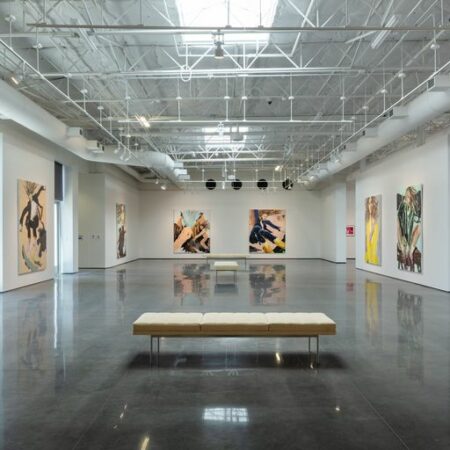HELGA CHRISTOFFERSEN
Helga Christoffersen is a curator at the New Museum in New York.
Christoffersen organized a book within the book for the catalogue for the Silent Station exhibition at Nikolaj Kunsthal, Copenhagen
Intro
Mie Olise’s solo exhibition The Silent Station at Nikolaj Contemporary Art Center is the most recent addition to her ongoing project A Fugitive Crossing His Tracks begun in 2009. The overall project has taken many forms thus fare, from painting to built structures, to sound work, to film and photography. All of these forms capture aspects of a multivalent narrative, in which Olise herself acts as a character, author and investigator. The layers of A Fugitive Crossing His Tracks present an ambiguous whole; it asks what is fiction and what is reality, where does Olise’s own story begin and where that of her characters ends.
Mimicking Olise’s own operations, as they are possible to trace throughout this larger project, I decided to undertake three investigations myself into what seams to be three central occupations of the project, which resonate in The Silent Station. In each of the following sections The Ship, The Travel, The Place, I will follow Olise’s construction of imaginary paths through real presents and ask how it is that we are able to board a ship who is no longer sailing, undertake a travel that has already ended and visit a place that might not exist. Rather than a story of a nostalgic past, these three sections are meant as curious exploration of the ship Olise is currently sailing, the travel she is in the middle of and the places that she creates.
The Ship: Between
The ship Espen Arnakke was built by Olise’s father during her childhood on the Danish island Mors. Named after the fictional character in Danish writer Axel Sandemose’s (1899–1965) 1933 book “En flyktning krysser sitt spor” (A fugitive crossing his tracks), Olise sailed out from Mors on the ship throughout her childhood. In Sandemose’s book Espen Arnakke himself undertook a travel by ship, leaving Mors harbor and ending up in Newfoundland. This is the point of departure for Olise’s two lines of investigation, two different tracks going out from the same harbor — the man Espen Arnakke and the ship Espen Arnakke. The one an imaginary character closely connected to the real life story of Axel Sandemose, the other Olise’s own story and the succeeding story of a ship changing hands. It is between these two parallel narratives that the ongoing project unfolds, continuously connecting as two travels undertaken – by ship.
Taking the exhibition The Silent Station, the ship appears as the ultimate connecter of fact and fiction. One the one hand we are presented with curious parts of a seemingly whole unfolding in real time. Olise investigates the traceable past of the writer Axel Sandemose and his character Espen Arnakke that takes her to foreign places such as Newfoundland and Fogo Islands in search of reconciling reconstructed presents with historical pasts. Axel Sandemose himself left for Newfoundland, there are still people who know about his arrival, the places he visited and the marks he made, as evidence to us of the travel undertaken by ship. Just as when Olise presents us to her fathers belongings connected to the ship Espen Arnakke, unfolds a travel undertaken by ship as a response to the fact that time inevitably tends to change our relationship to places with a past.
The ship becomes a point of entry, a connecter, when we can’t find any evidence of the actual journey undertaken. We are able to enter the moment of departure and arrival by designating their geographical location, their historical documentation and their current appearance, all with the ship as the vessel taking of from one to the other. The central question thus become how are we able to imagine the actual journey that was undertaken, meaning not the journey itself, but how this journey has changed and is constantly changing the places that we depart from and arrive to. In this occupation with physical places and how we can enter their historical fabric, the ship becomes the significant indicator of how to navigate through Olise’s project, from the actual ship Espen Arnakke and its travel through different hands as documented both by Olise’s father throughout her childhood and later by Olise herself when tracking down its journey, all the way to the The Silent Station at Nikolaj Contemporary Art Center, a train station, that was one destination of a travel by ship that we are encouraged to board.
The Travel: Unfolding
It is significant to notice how Olise uses the travel, the undertaking of travels, her own travel and that of others to confuse our sense of time and space. On the one hand her thorough investigations take us down paths that seam fare from constructed, on the other she is constantly drawing lines between narratives that come to appear as parallel realities. The travel is often what allows us to follow her narrative, though going along with a sense that we might in fact be crossing the border from reality to fiction without really being able to point out when that happens.
In The Silent Station we can follow Olise from the imaginary small town Jante on Mors, home to the character Espen Arnakke and the writer Aksel Sandemose, to the Fogo Islands, home to Arthur Ludlow, son of the man who hid both men on his attic when they were wanted for murder after arriving to Newfoundland. Between those places, and as a result of both stories, two train stations show up as significant sites, however none of which can any longer be found. There was once a train station on Mors that Sandemose worked on building after returning from Newfoundland. There was once a train station in Newfoundland that proved decisive to Arnakkes’s escape. Olise has tried to find both, but what she tracked down is yet another site long gone, offered to us as a travel undertaken.
Following Olise we are dropped in the middle of a travel already undertaken, however who is constructing it is essentially ourselves, Olise does not act as guide. Just by mapping out sites on Google Maps, the movement from one place to another is visibly one of the elements at stake when we move through the exhibition The Silent Station. In fact it becomes clear that everything originates from the travel and that which was discovered or inhabited along the way. And it is then that the very different works collapse into one interconnected space that is necessarily neither A nor B, neither the departure nor the arrival but in stead the travel itself unfolding.
The Place: Redone
Essentially there are two places in Olise’s project that spans the lived and imagined space altogether – the harbor on Mors and the harbor in Newfoundland. As rich in significance as they are to Olise’s project as silent and anonymous they can be to any visitor who is not looking through Olise’s lens. We have no difficulty believing they are very real, yet any proof of their existence in this context becomes the visualization of a negative space, of the non-place. There is nothing out of the ordinary to see, though they embody the extraordinary as point of reference for Olise’s entire construct. And this is also the paradox of the project. Olise is taking us on a journey and unfolds a fragmented narrative that leads us from place to place, though these places did in fact not exist before we visited them, as Olise has left them open for us to enter an interconnected space where the ends are deliberately not made up to meet.
What in stead unfolds is an infinite exploration of a place that is undone for us to consider its significance, not only to Olise’s project and our perception of it, but rather to the non-place that is put in stead as a consequence hereof. Arnakke’s past activities and his construction of the Jantelov (Laws of Jante) takes us into the homes of current residents on Mors and across the island following myths connected to his existence. And between these occurrences we can make up our minds as to how they affect each other and why.
Whether we believe the story of the rotten snow owl in the cookie jar, it is suddenly our connection to the place where Olise’s father knows of the invisible stone described by Arnakke and the secret path that he and Olise share. As well when Olise sets out to document these places throughout her manifold explorations, that includes their negative space in the case of the invisible stone, or their symbolic place as when the black beams span from floor to ceiling in The Silent Station, we have already entered the space in between A and B, between Mors and Newfoundland, in fact we are in the place undone and about to construct it again.


